How to See Northern Lights in Michigan: 10 Best Tips
Thinking about Northern Lights viewing? The Great Lakes State can offer fans who are willing to seek out the right locations and times a memorable reward! If you’ve ever dreamt of seeing a magnificent Aurora Borealis light display, use these 10 tips to help you plan to see Northern Lights in Michigan.
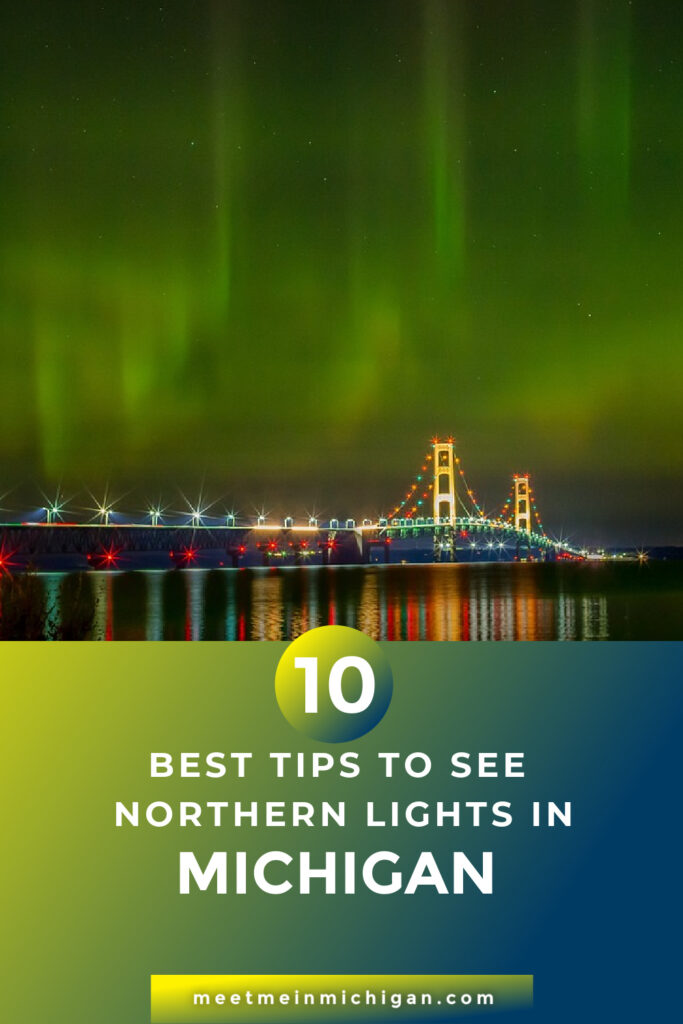
Table of Contents
This article contains affiliate links and/or references to our advertisers. We may receive compensation when you click on or make a purchase using these links.
Discover the best place and time to see Northern Lights in Michigan
The Upper Peninsula is a perfect spot to view the Aurora Borealis light show in the dark sky, while the Lower Peninsula can also provide a way to witness this natural phenomenon. Learn where to go and when to catch the best display of the Northern Lights in Michigan using the following tips.
What are Northern Lights and What is the Science Behind the Northern Lights?
How do Northern Lights form?
Northern Lights, which are also known by the Greek-derived name Aurora Borealis – meaning “windy sunrise,” are a natural phenomenon that occurs in the Earth’s atmosphere at high latitudes. Solar wind carries the sun’s charged particles to interact with our Earth’s geomagnetic field and atmospheric gases. This interaction stimulates atoms and molecules and produces a bright, colorful light display that can be seen in the night sky.

What causes the different colors in Northern Lights?
The colors of Northern Lights depend on the atmospheric gas that is being affected by the charged particles. The most common colors are green caused by oxygen atoms and pink, caused by nitrogen molecules. Sometimes Northern Lights may have red, blue, yellow, or purple colorations, depending on the altitude of the display and other factors.
How does the interaction of solar wind and Earth’s atmosphere create Aurora?
The fascinating science behind Northern Lights has documented the interaction of charged sun particles, which are carried by solar wind, with our planet’s electromagnetic field and gases in our atmosphere. When the charged particles hit our magnetic field, they are funneled toward the North and South Poles, Along the way, they collide with atmospheric gases. This collision releases energy in the form of light.
Do latitude and hemisphere affect Aurora visibility?
Your location probably has the biggest impact on your chances of seeing the elusive Northern Lights, which are most commonly seen at higher latitudes. This is where our planetary magnetic field is the strongest. For example, people living in the northern hemisphere are more likely to get a glimpse of the Aurora Borealis, while those in the southern hemisphere may witness Aurora Australis (same phenomenon, different location).
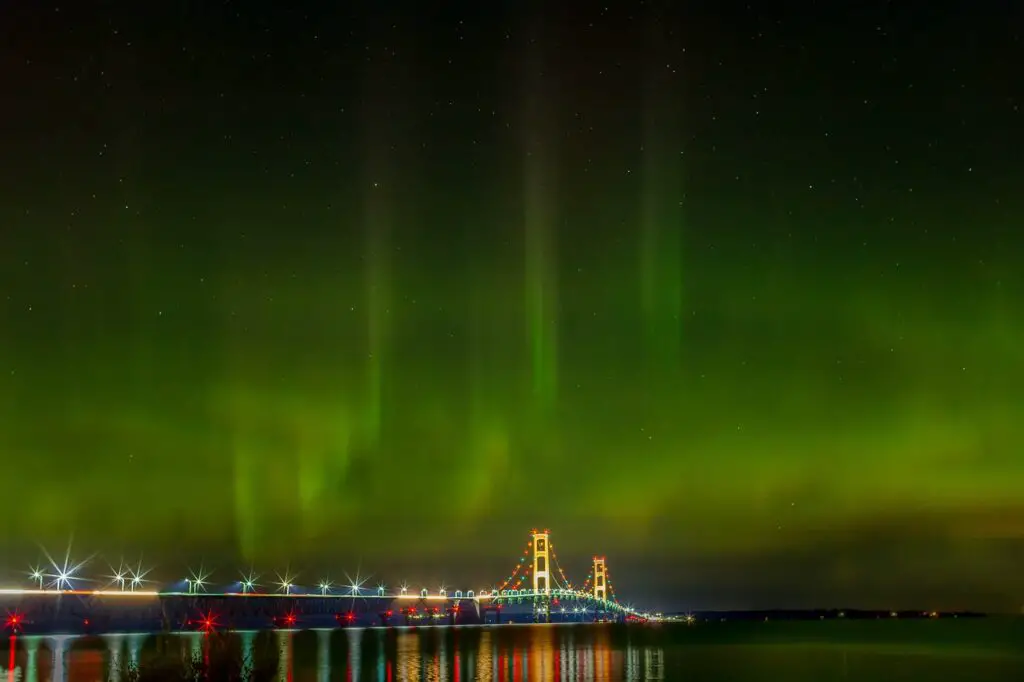
What is the connection between Aurora and Earth’s magnetic field?
The connection between Northern Lights and Earth is a scientifically complex and fascinating phenomenon. Basically, the magnetic properties here help to funnel charged particles from the sun towards the poles, where they collide with gases in the atmosphere and create the glowing lights of the Aurora.
Why is Michigan a Great Place to see the Northern Lights?
Michigan is Geographically Desirable for a Date with the Aurora
Michigan is located in Northern Hemisphere at and around the 45th parallel. Its extensive shoreline along Lake Superior, Lake Michigan, and Lake Huron makes it a prime spot to see the best Northern Lights activity in the continental United States. The state’s geography also offers a variety of landscapes, from dense forests and rocky shore areas to wide-open fields and dark sky parks to isolated island locations. Any of these can provide ample opportunities for aurora-seekers to appreciate the beauty at different angles and elevations.
Michigan has historic connections to Northern Lights and indigenous culture
Native American cultures in the Midwest region have revered and studied the Northern Lights for centuries. The Ojibwe (Anishinaabe) people in this region interpret the Waawaate (the Ojibwe name for the Aurora) as a continuation of a Great Flood legend. Indicative of their rich traditions of storytelling and mythology, they believe the waawaate to be a spiritual manifestation with the healing and protective powers. Today, visitors to Michigan can learn more about this cultural connection through museums and educational programs throughout the state.
What is the best time to see Northern Lights in Michigan?
Northern Lights can happen during any time of the year, but usually the best time to see them in Michigan is in winter. Michigan winter nights are longer and darker, and the skies are usually clearer in colder weather. However, this doesn’t necessarily mean that you can’t see them during other seasons. The key is to find clear, dark skies with low light pollution to distract from a full view. Also, be aware that the intensity of the show cannot always be discerned with the naked eye, so come prepared with your camera (even your smartphone can be superior) or other night vision equipment in order to get a full experience.
Where are the best places to see Northern Lights in Michigan?
Michigan has Several Dark Sky Parks and Preserves
In recent years, Michigan has taken steps to protect its dark night skies and offer more opportunities for stargazing and Aurora hunting. Several parks and wildlife preserves have been officially designated by the International Dark-Sky Association, offering some of the darkest and clearest skies in the state.
Top spots to see Northern Lights in the Upper Peninsula
Michigan’s Upper Peninsula is the best bet with its miles of shoreline on the south shore of Lake Superior, offering some of the darkest and most remote skies in the state, This makes it a prime spot for Northern Lights to appear. In particular, places in Michigan’s western Upper Peninsula like the Keweenaw’s Eagle Harbor, the Houghton area, Marquette, and Copper Harbor make for great locations north of the Mackinac Bridge to witness the Aurora Borealis.
Great locations in the Keweenaw Peninsula
The Keweenaw Peninsula is another hotspot with breathtaking views for Northern Lights, thanks to its position jutting out into Lake Superior and its high elevation. Places like the Keweenaw Dark Sky Park – one of only three internationally designated parks in the state, Bete Grise Preserve, and the Copper Harbor lighthouse are the best viewing spots for Aurora hunters.
Isle Royale National Park
If you’re lucky enough to score an overnight stay in Isle Royale National Park, you may be rewarded with a celestial show which could include a meteor shower, a full view of the Milky Way, and planets in our solar system, including the moon.
Lower Peninsula Michigan parks with good Aurora viewing chances
While the Upper Peninsula takes the cake for the darkest skies in Michigan, there are still a number of places in the Lower Peninsula that offer good chances for observing the Northern Lights. Use our links from any of the interactive maps below to book your stay.
Sleeping Bear Dunes National Lakeshore a must-see natural attraction in Michigan about 25 miles west of Traverse City.
Port Crescent State Park near Port Austin is at the tip of Michigan’s thumb.
Headlands International Dark Sky Park in Emmet County outside of Mackinaw City in Northern Michigan are some of the best spots with less light pollution and good open views of the northern horizon.
What time of year is best to see Northern Lights in Michigan?
Month-by-month guide to Northern Lights in Michigan
The factors that affect Northern Lights visibility – solar activity and geomagnetic conditions – are always changing, This constant state of change makes it difficult to predict the optimum times to see them. Generally, however, the winter months from November to March tend to offer the most chances for clear skies, which make for unimpeded views opportunities, with peak months being December and January.
In 2023, magnificent displays occurred well into April. A major solar flare burst of energy was observed on March 3. But an even better precursor of Aurora activity was to follow the next month. A coronal mass ejection, a stronger force than the typical solar wind interactions, occurred on April 21, resulting in excitement for sky-watchers far more south in America than usual.
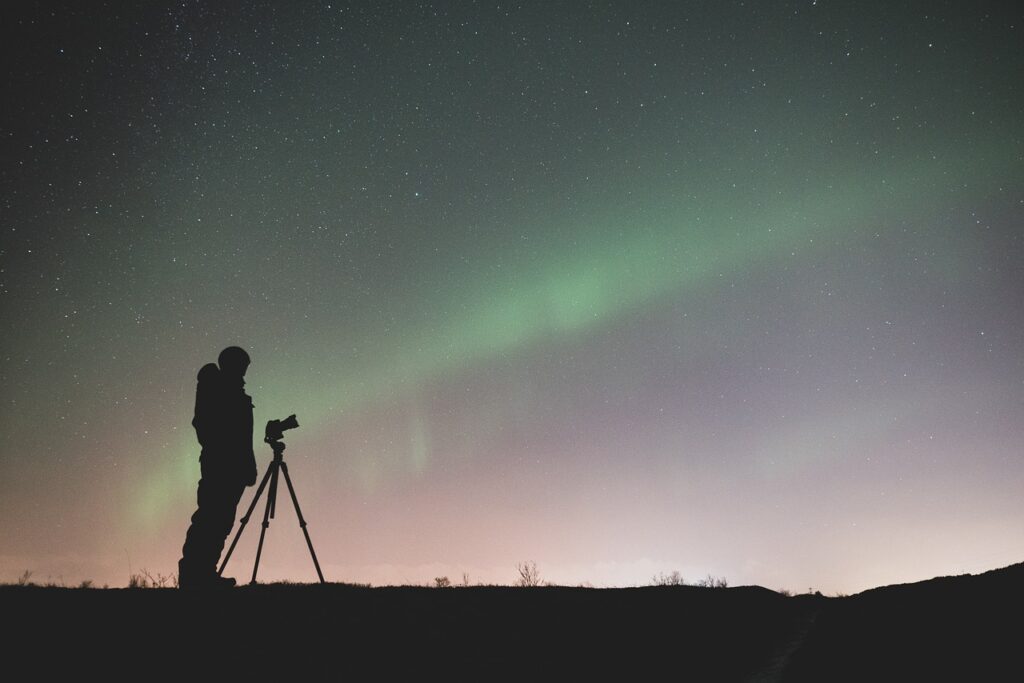
How to use Aurora forecast websites to plan your visit
There are several websites and apps that can help you track the conditions for Northern Lights appearances in Michigan, providing real-time data on the KP (geomagnetic activity) index, solar flares, and other variables that can influence local Aurora visibility. Some of the most popular Northern Lights forecasts include the Space Weather Prediction Center operated by the National Oceanic and Atmospheric Administration (NOAA), AuroraWatch from our neighbors to the north, and the Geophysical Institute at the University of Alaska Fairbanks.
Why fall is a great time to witness magnetic activity in Michigan
Although winter is often thought of as the best time to view Northern Lights in Michigan, fall can be a lucrative bet for great opportunities to catch a glimpse of what can seem to be a very elusive phenomenon. In particular, the months of September and October flanking the Autumn Equinox can be a good time to witness the Aurora, with clear skies and the added bonus of autumn foliage.
How do I increase my chances of seeing the Northern Lights in Michigan?
Tips for finding light pollution-free areas in Michigan
One of the most important factors in improving your chances of seeing the Northern Lights in Michigan is finding a location with little to no light pollution. This means your best chance to see them is to avoid cities and other areas with bright lights and instead seek out remote areas with a lack of light. State and national parks, wildlife preserves, and camping areas can all provide some of the best opportunities for dark sky viewing.
How to take great photos of the Northern Lights in Michigan
Capturing the beauty of the Northern Lights in photos can be challenging, but with a little practice and the right equipment, it is possible to take enviable shots. To get the best results, you will need a camera with manual controls, a wide-angle lens, and a sturdy tripod. Experiment with high ISO settings and longer exposure times, and also try a remote shutter release to avoid the dreaded camera shake.
What to pack for your Michigan Aurora viewing trip
To have a successful and comfortable Northern Lights experience, you will need to be prepared for the cold and changing weather conditions Michigan blesses us with. We all know the drill: dress in layers that you can add or subtract, and bring warm footwear – socks and sturdy, weatherproof boots. Gloves or mittens for frosty finger protection and hats to help maintain body temperature are imperative.
Make sure you have a good supply of food and water on hand. It’s possible you will be out in the elements for hours, so be prepared for any development.
Don’t forget to pack your camera and tripod, and any other equipment you need for taking photos of the lights.
Conclusion
In conclusion, experiencing the beauty of Northern Lights in Michigan is an awe-inspiring sight. The Great Lakes State provides numerous opportunities to see the Aurora Borealis in all its glory, and with the help of the tips provided in this post, you can be well on your way to witnessing a stunning light display. Remember these 3 things:
- plan your trip ahead of time,
- stay up-to-date with the latest weather forecasts,
- and find a location with low light pollution to get the best vantage.
Don’t wait any longer, start planning for a Northern Lights trip in Michigan today!
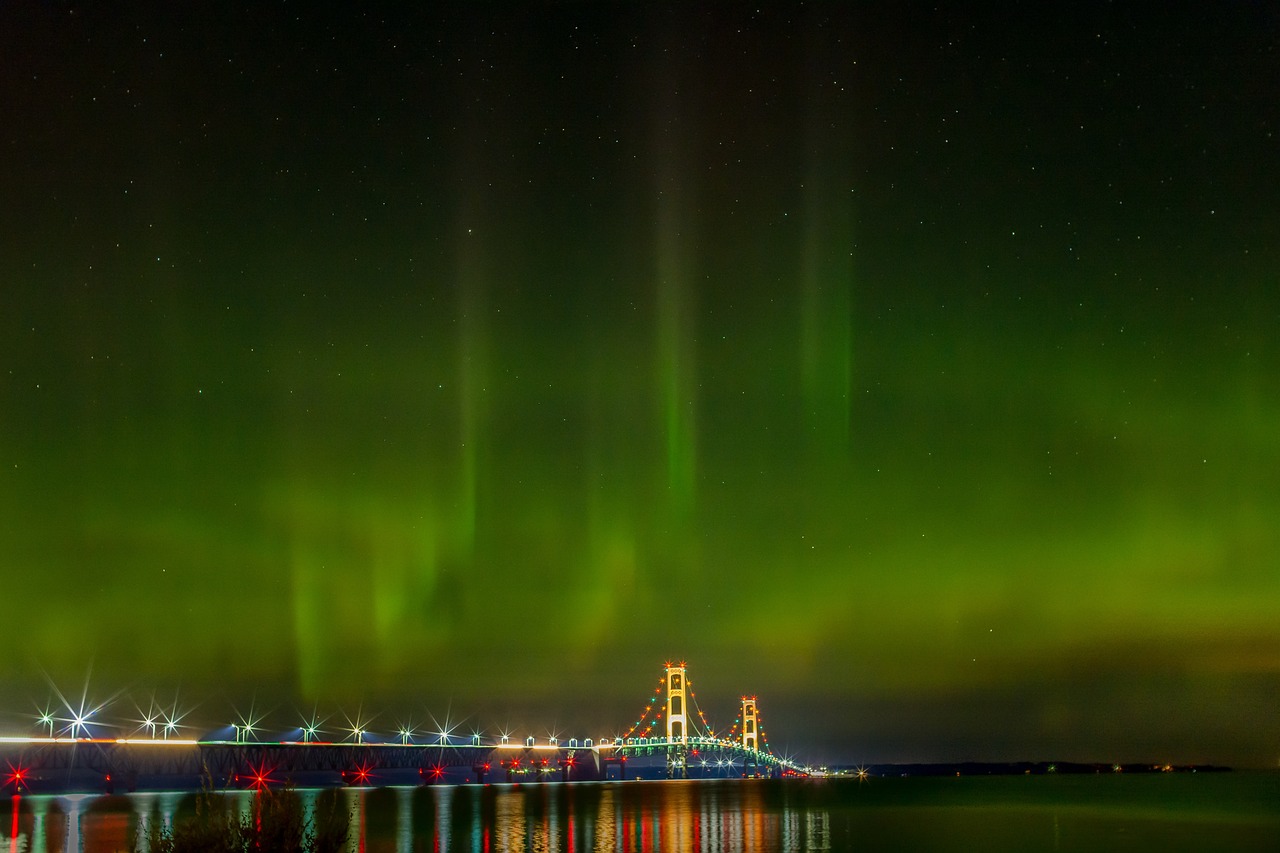


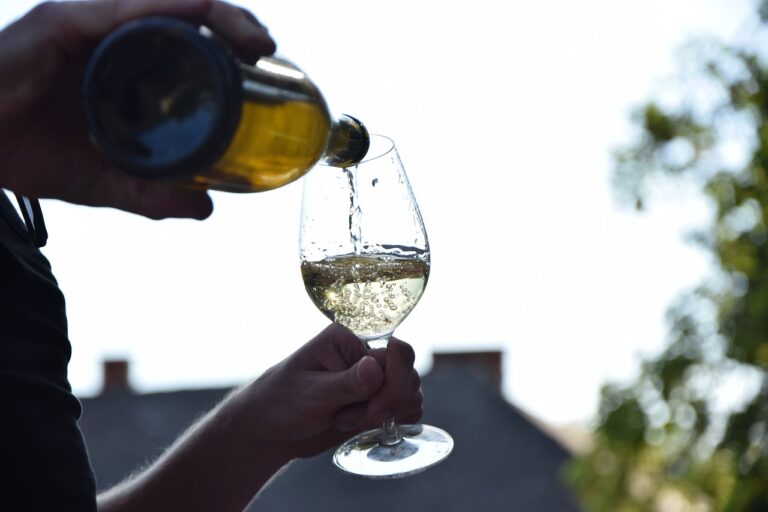
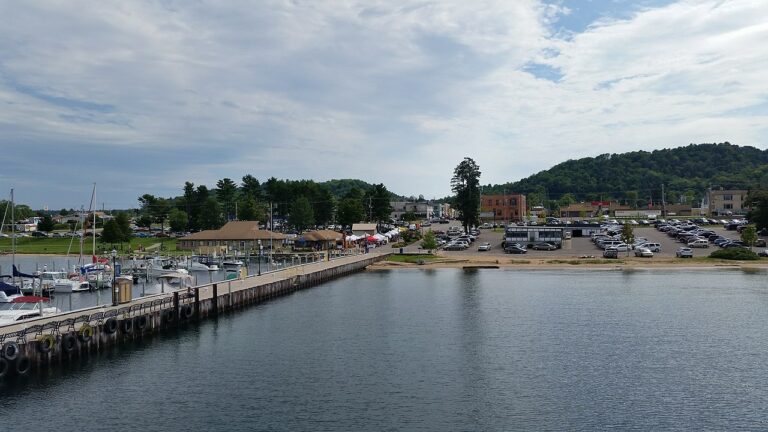
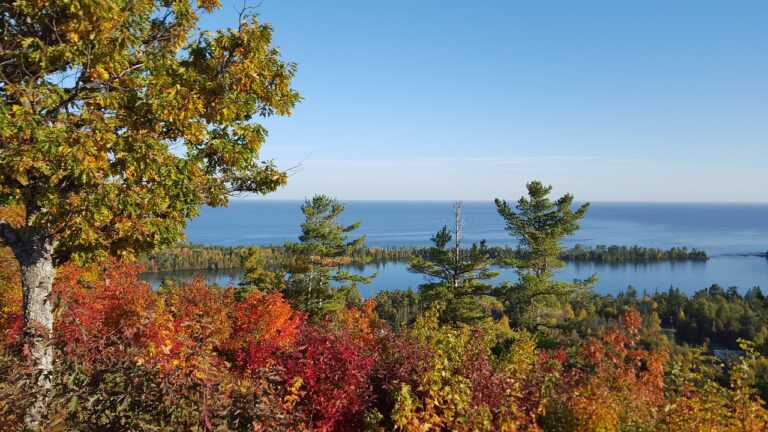
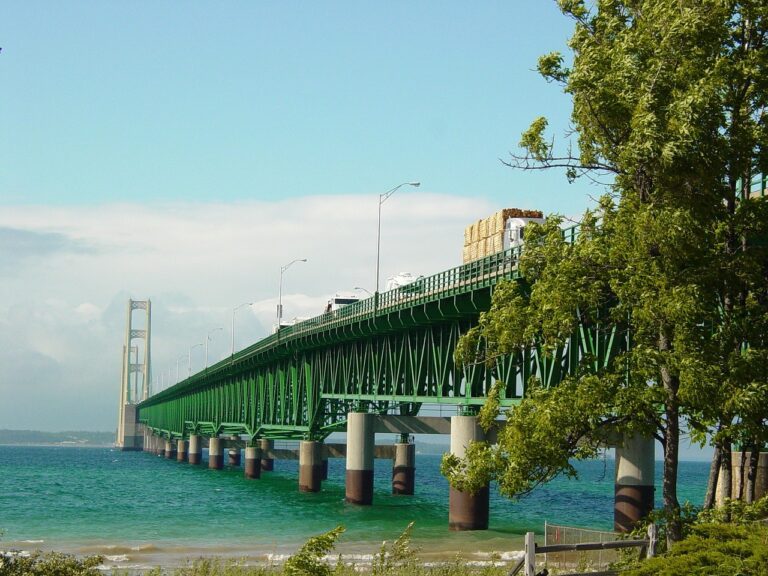
One Comment